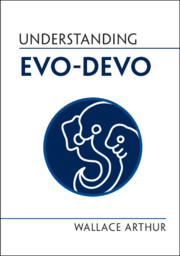Book contents
- Understanding Evo-Devo
- Series page
- Understanding Evo-Devo
- Copyright page
- Reviews
- Dedication
- Contents
- Foreword
- Preface
- Acknowledgements
- 1 What is Evo-Devo and Why is it Important?
- 2 Antecedents of Evo-Devo
- 3 Evolutionary and Developmental Essentials
- 4 Evo-Devo Essentials
- 5 The Evolution of Variations on a Theme
- 6 The Evolutionary Origins of Themes and Novelties
- 7 The Evolutionary Origins of Body Plans
- 8 Body-Plan Features and Toolkit Genes
- 9 Bringing It All Together
- Concluding Remarks
- Summary of Common Misunderstandings
- References
- Figure Credits
- Index
- References
References
Published online by Cambridge University Press: 29 April 2021
- Understanding Evo-Devo
- Series page
- Understanding Evo-Devo
- Copyright page
- Reviews
- Dedication
- Contents
- Foreword
- Preface
- Acknowledgements
- 1 What is Evo-Devo and Why is it Important?
- 2 Antecedents of Evo-Devo
- 3 Evolutionary and Developmental Essentials
- 4 Evo-Devo Essentials
- 5 The Evolution of Variations on a Theme
- 6 The Evolutionary Origins of Themes and Novelties
- 7 The Evolutionary Origins of Body Plans
- 8 Body-Plan Features and Toolkit Genes
- 9 Bringing It All Together
- Concluding Remarks
- Summary of Common Misunderstandings
- References
- Figure Credits
- Index
- References
- Type
- Chapter
- Information
- Understanding Evo-Devo , pp. 173 - 181Publisher: Cambridge University PressPrint publication year: 2021

